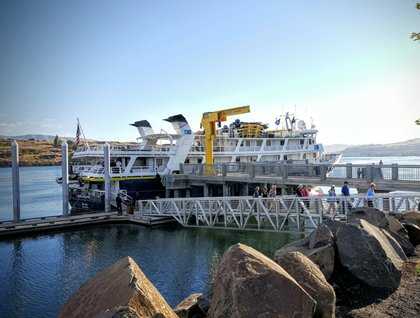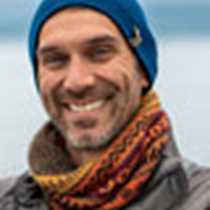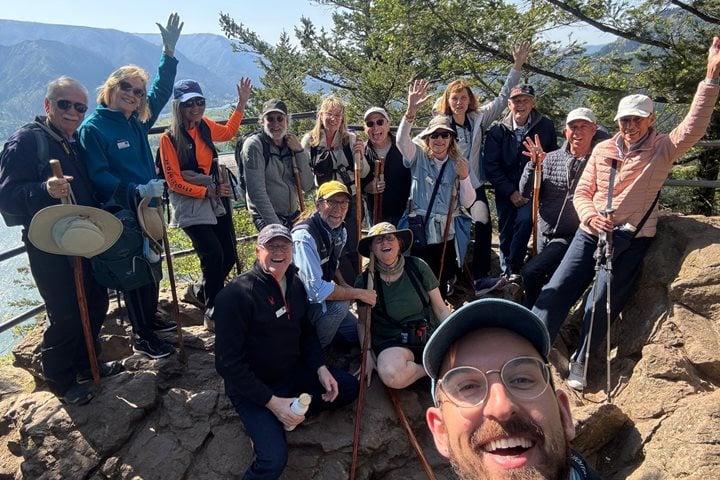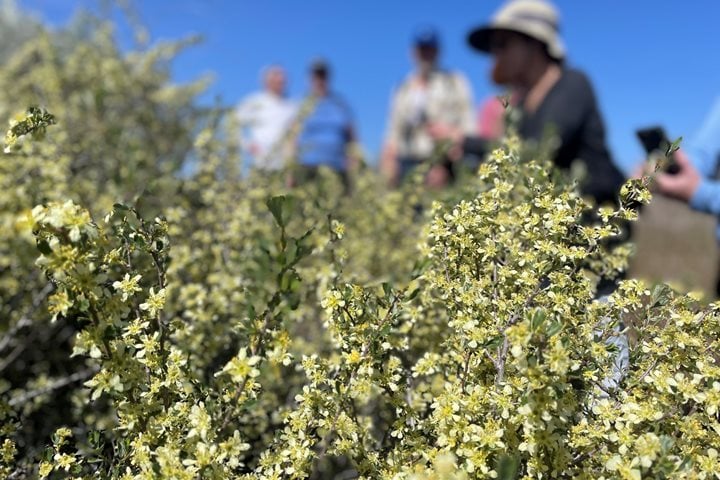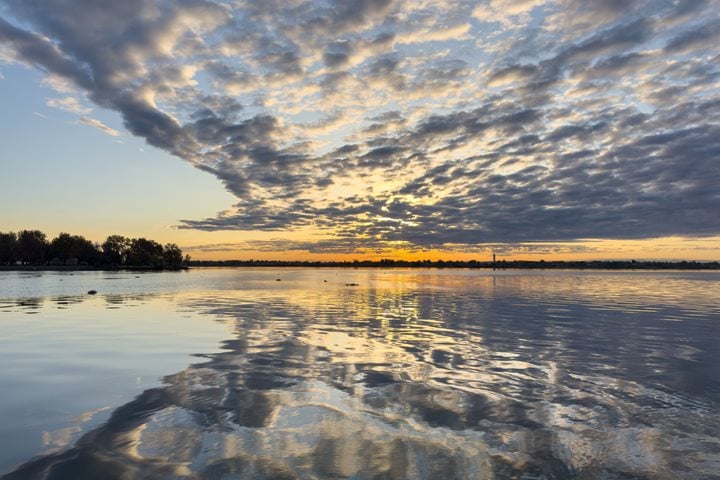Despite the fact that our trip has now taken us into the “rain shadow” of the Cascades Range—where it should be dry compared to the lands west—we woke to cloudy skies and some rain sprinkles in The Dalles, Oregon. Nevertheless, our guests had positive attitudes about the weather. We all boarded motor coaches in the morning and rode along Oregon’s historic Highway 30 up to Rowena Crest, a natural plateau that affords sweeping views up and down the eastern end of the Columbia River Gorge. Back in the coaches, we were off for the Gorge Discovery Center.
The Discovery Center is an excellent museum housed in a beautiful building overlooking the Columbia River. We were treated to a presentation with live raptors—including a great-horned owl, red-tailed hawk, and American kestrel. We enjoyed the museum’s informative displays on the region’s cultural and natural history. I took a group of guests around the grounds for a plant walk. We got to see numerous species that were described and collected by Lewis and Clark. Meanwhile, many folks took off on bicycles, riding along a riverfront path back to the National Geographic Sea Lion. Yet another group rode a coach into town where they took a walking tour with our historian, Jim.
After lunch aboard the ship, all of us went across the big river on coaches to visit Maryhill Museum. Jim had given an excellent presentation last night on Sam Hill and the history of the museum. That really helped put our experience in context. Maryhill Museum has many fascinating pieces of art. I particularly enjoyed the woodcut prints of animals by Andrea Rich and the Native American artifacts. While we wandered the large museum, soft showers of rain brought much-needed water to the arid landscape. It was quite beautiful.
Leaving the museum, we next stopped at Sam Hill’s life-sized replica of Stonehenge. This was Hill’s memorial to local soldiers who died in World War I. Jim gave a poignant speech for us in the center of the stone circle.
We still had some time before the National Geographic Sea Lion would anchor off shore to pick us up nearby, so we stopped at a local fruit stand and sampled delicious apples, pears, and ice cream. I thought it was really neat to see massive chunks of columnar basalt placed around the entrance of the fruit stand. You don’t see that every day!
The expedition landing crafts from the ship motored over to pick us up and we were all once again aboard and ready to continue upriver. Dinner was excellent, as always. After dinner, I gave a presentation on Pacific salmon, which stimulated some interesting discussion afterward.
Another epic day on the Columbia River!

